Qualifying for the Las Vegas Grand Prix showcased cars on the absolute limit, raising the question of whether Formula 1 will see the art of driving in the wet return.
A quick search on YouTube of 1980s and 1990s F1 race highlights demonstrates to younger fans why anyone above millennial age gets misty-eyed when remembering the golden era of Grand Prix Racing.
The cars were smaller and lighter, making driving them a physical experience. Drivers got out of the cockpit, soaked in sweat after wrestling with their cars for two hours. The slightest mistake resulted in a spin, or worse – a one-trip into a gravel trap.
Looking at footage of the likes of Ayrton Senna, Alain Prost, Michael Schumacher and Damon Hill, the cars are visibly trying to get away from their world champion operators. Qualifying one of these cars on pole position gained drivers immense prestige; their rapid hand movements on the steering wheel alone justifying their pay packets.
Sadly, as technology evolved and engineers added more weight to enhance essential safety features, F1 cars began to feel sluggish. By the mid-2010s, the immense weight of the new power units, coupled with design philosophy changes, saw cars a massive 223kg heavier than they were in 1990.
Discovering that amount of weight gain in F1 cars is about as welcome as a burnt turkey on Christmas Day after finding all the presents have been stolen. Fans have been crying out for smaller cars and better racing for years now, with cars that can race side by side and follow each other.
The result of this weight gain on the racing speaks for itself. They are cumbersome, have the turning circle of a London double-decker bus, and still struggle to follow one another closely thanks to dirty air. The sport now mollycoddles its drivers, who lack the edge of their historical counterparts – although they remain formidable athletes.
The size of the cars has become ridiculous. Line up a 1994 car and a 2025 car side by side, and the 1994 car fits seamlessly inside with its modern counterpart. The dramatic differences of the front wings alone would make Freud have a twinge of inadequacy.
Fernando Alonso’s spending almost the entire 2010 season finale stuck behind Vitaly Petrov’s Renault, which cost him the title, led, in part, to the introduction of DRS, a tool that critics still malign. It provided a sticking plaster, but it became the solution for too long.
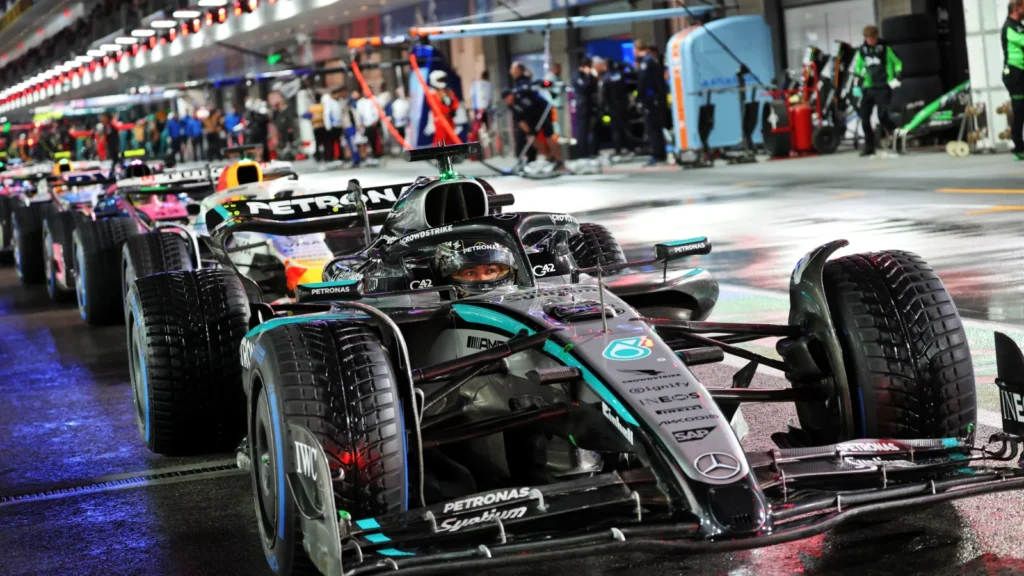
Las Vegas provides welcome shot of nostalgia
But qualifying for the 2025 Las Vegas GP showcased something not seen in almost 25 years: cars driven through the art of driving, drivers wrestling their cars, seeking grip on a track that offered none.
A spectacular sight, the likes of Lando Norris and Max Verstappen slipped and slid their way to the front row, while those behind had to dig to new levels internally to avoid the unforgiving concrete barriers.
For those who watched the sport in the 1980s and 1990s, it was a reminder of the infamous 1998 Austrian Grand Prix qualifying session. Torrential rain kept the cars in the garages for 30 minutes before a radical grid emerged, with cars power sliding across the hour.
The drivers themselves seemed to love the treacherous conditions, a break from the monotonous norm.
Drivers locked up under braking or were unable to put power down under acceleration, leading to spectacular power slides. Franco Colapinto won the accolade of save of the night, correcting a spin that threatened to end with an almighty crash.
Many spoke after qualifying of their challenges on the circuit, or admiring the skills of their rivals. Q1 and Q2 were particularly tricky, with pouring rain and a fog-like spray hiding large areas of standing water. Nico Hulkenberg provided insight into the danger of a wrong call on tyres in the opening stages: “Carlos went out on Inters in front of me, and he was sending it on the out-lap. I was like, holy moly! Surprised he didn’t lose the car. F*ck!”
Rookie Oliver Bearman called the conditions “the worst I’ve ever experienced in my life, in karting, F3, F2… anything”.
Fellow rookie Isack Hadjar inclined to agree, although the unpredictable chaos seemed to delight him.
“I never got to really try myself in the rain in an F1 car, so today was the first time, and honestly I enjoyed it very much,” Hadjar said. “Especially on the full wet, it was good fun.”
Reigning World Champion Max Verstappen commented on what many fans were thinking: the caution and talent of the field led to a drama-free session despite the rain, nothing short of a miracle considering the deluge.
“Honestly, I was surprised there were not too many incidents,” Verstappen remarked. “So everyone was behaving quite well, or scared!”
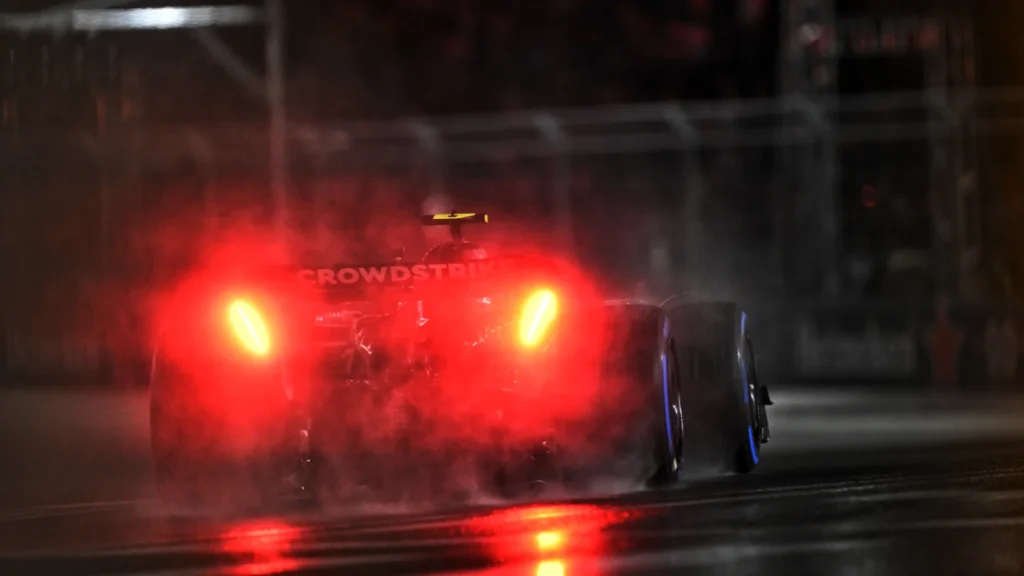
What caused F1’s most unpredictable qualifying of the year?
The unique nature of Las Vegas manufactured the conditions, a repeat at other tracks sadly impossible. A popular race with F1’s American audience, like most cities, its roads are in constant use.
But a major difference to other street circuits is that the streets of Sin City reopen once the sessions end. The equivalent of performing precise and complex equations on a whiteboard and wiping it clean, the American public erased all grip laid down during practice sessions every night. Teams had to start fresh in each session to assess circuit performance, while drivers had to cautiously test grip levels and recover from the damage caused by thousands of civilian cars.
The tarmac in Las Vegas has been under scrutiny since the inaugural race in 2023. A drain cover coming loose played havoc in practice, while the ultra-smooth re-laid surface offered precious little grip.
Two years on, the lack of grip continues to be a factor when F1 rolls into Las Vegas. Pirelli Head of F1, Mario Isola, spoke on Thursday of the challenges faced by racing in the Nevada desert.
“We know that the track is going to be open every day, so there is a sort of reset compared to other tracks that stay closed, he explained. “When we came here on Wednesday the surface was greasy.”
If F1 knows Las Vegas is a potential problem child, what’s the solution? The obvious is yet another re-laid surface. However, Esteban Ocon is not sure that this is the best route forward.
“Whatever tarmac you put on, it’s always going to be tricky. There are no corners, so we don’t put heat into the tyres. That’s the problem. You have like 15-20 seconds from one corner to another, so how do you generate the heat? Obviously, the tarmac is very smooth, but we don’t want a rough tarmac that’s going to undulate and kill our backs in the race.”
It seems The Strip forever dooms (or blesses) itself to need regular rubber laid down on a race weekend. But this, of course, raises another question – one which could cause the entire F1 calendar problems.

Is there appetite for Las Vegas-style qualifying every weekend?
While older fans may yearn for unpredictability and squirming cars week in week out, history shows that F1 needs caution to prevent rushed, illogical decisions that hinder racing and the direction of the sport.
Fans widely recognise Canada 2011 as one of F1’s greatest ever races, yet it is the birthplace of one of the sport’s biggest missteps. Then supremo Bernie Ecclestone latched onto the idea that they could replicate the rapidly disintegrating tyres every round.
Without logic, F1 tasked Pirelli with creating tyres that lost grip faster than those then in use. The 2013 British GP was the result, with multiple drivers suffering high-speed punctures as their tyres exploded. The sport acted shocked, but realistically, this resembled drinking spoiled milk and then being surprised by the taste.
There is no question that F1 should try to push drivers to drive their cars at the absolute limit, but this requires careful consideration of the best route forward to avoid a repeat of the 203 debacle.
The unique characteristics of The Strip created an unusual situation where modern F1 cars resembled those of yesteryear. It was glorious, welcome, and unpredictable. Fans yearn for closer racing and gladiator-style drivers, not the mollycoddled ones of today.
The chances are low that anyone will consider the Las Vegas GP phenomenon as a one-off, given its potential to be replicated. But will it lead to the dawn of cars returning to those who require drivers, quite literally, to wrestle them around a circuit? Time will tell, with fans wanting both the house and the gambler to hit the jackpot.
READ MORE – Motorsport Week’s F1 2025 Las Vegas GP Driver Ratings




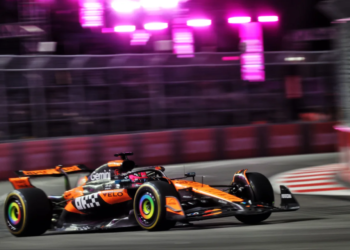
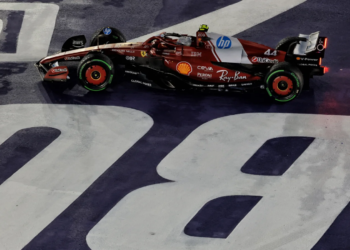



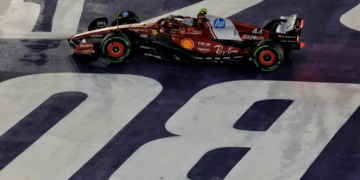
Discussion about this post